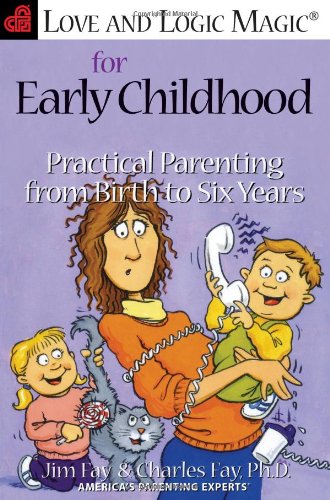In this recording of our latest Parenting Pathway class, you will hear from special guests Director Kelley Wilkinson and Assistant Director Jenn Bollom from Stonebriar Preschool Pals. Both are certified Love and Logic trainers and advocates of this approach to education and parenting. In this two-part class, Parenting with Love and Logic, you will hear strategies, techniques, tips, and lessons from real-life experiences that you can apply today.
Watch the class recordings below, and view a summary of key points and recommended resources below.
Part One
Part Two
The 3 “E’s” of Love and Logic
- Example
Kids learn far more from the example we set than from the lectures we give. - Experience
Mistakes made early in life are far more “affordable” than mistakes made later on. - Empathy
Empathy allows kids to learn from their mistakes. Anger may cause them to blame us for their problems.
Learning to Provide Appropriate Choices
Love and Logic parents offer two and only two choices with the understanding that either option picked is acceptable and within the boundaries they have already set. The key is to NEVER offer a choice you would be unhappy with! Use Empathic Responses to allow choice-making to your child as much as possible every day. And let your child learn to stick with their decision once a choice has been made; do not allow them to change choices if they change their mind. Learning to live with the decision they made and its consequences is key to the process.
Empathy: The Most Important Skill in Love and Logic
Learning to focus on parenting with empathy takes time and practice. Empathy must be delivered with sincerity that your child will recognize, not sarcasm. When used correctly, empathy makes the child’s poor decision the “bad guy” while keeping the parent the “good guy.” As a result, the child has a harder time blaming the parent for their problem. This forces the child to look inside, own their mistake, and learn from the consequence.
For empathy to be effective, our tone of voice and body language must also convey the love we have for our little ones.
Remember: Your empathy must come before the consequence, not after. Your goal is to get your child firmly into “Thinking Mode” before doing anything else.
Steps to Putting Love and Logic Into Practice
Step One: Pick Your Empathetic One-Liner
This is a short statement you use over and over to help the child realize they need to solve the problem themselves or ask for solution suggestions.
Step Two: STOP- Don’t Engage!
Don’t think about what your child is saying, because you might want to reason with them. Show emotional restraint by not arguing with your child.
Step Three: Repeat Your One-Liner
Say your one-liner calmly, sincerely, and in a non-emotional manner, and make sure your body language is conveying what your words are saying. With practice, parents repeat the same one-liner every time kids try to argue or beg.
Anger and frustration feed misbehavior. Enforceable statements must be provided with a caring attitude.
The more words we use with a misbehaving child, the less effective we become. Great parents keep their enforceable statements short and sweet.
Additional Resources:
- Loveandlogic.com
- Love and Logic Magic for Early Childhood, by Jim Fay and Charles Fay, Ph.D.
- Love and Logic Magic, When Kids Leave You Speechless, by Jim Fay and Charles Fay, Ph.D.
- Parenting with Love and Logic, by Foster Cline and Jim Fay
- From Bad Grades to a Great Life, Unlocking the Mystery of Achievement for Your Child, by Dr. Charles Fay


